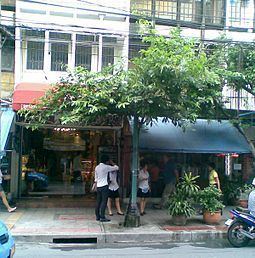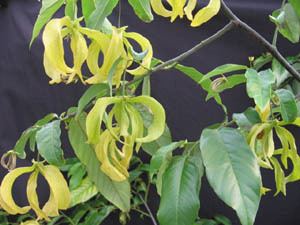Rank Species | Genus Desmos Higher classification Desmos | |
 | ||
Similar Uvaria siamensis, Mammea siamensis, Aglaia odorata, Desmos, Clerodendrum fragrans | ||
Desmos chinensis
Desmos chinensis is a flowering plant of the custard-apple family, Annonaceae. The yellowish-green flowers are similar to the Ylang-ylang flowers, therefore this plant is sometimes known as dwarf ylang-ylang. Their smell, however, is much less strong and is only felt in the morning. By midday it has mostly faded away.
Contents

Description and habitat

It is a vine or spreading shrub that may grow up to 4 m high if it finds an adequate support, otherwise it rarely grows taller than 150 cm.

Desmos chinensis is found throughout Southeast Asia from Nepal to the Philippines. It grows at the edge of forests in flat areas up to a height of 600 m. It may grow as a ruderal plant on the margin of roads and rural causeways, as well as in disturbed terrain. It prefers slightly shady places.

This plant is characteristic of the Bangkok urban landscape. Supported by a metal framework, Desmos chinensis is used in Bangkok city to make shades along the sidewalks of the main streets and for bus stops. The advantages of Desmos chinensis are that its dense leaf growth gives a cool shade and the fact that its relatively thin trunk and root system don't break the sidewalk pavement.
